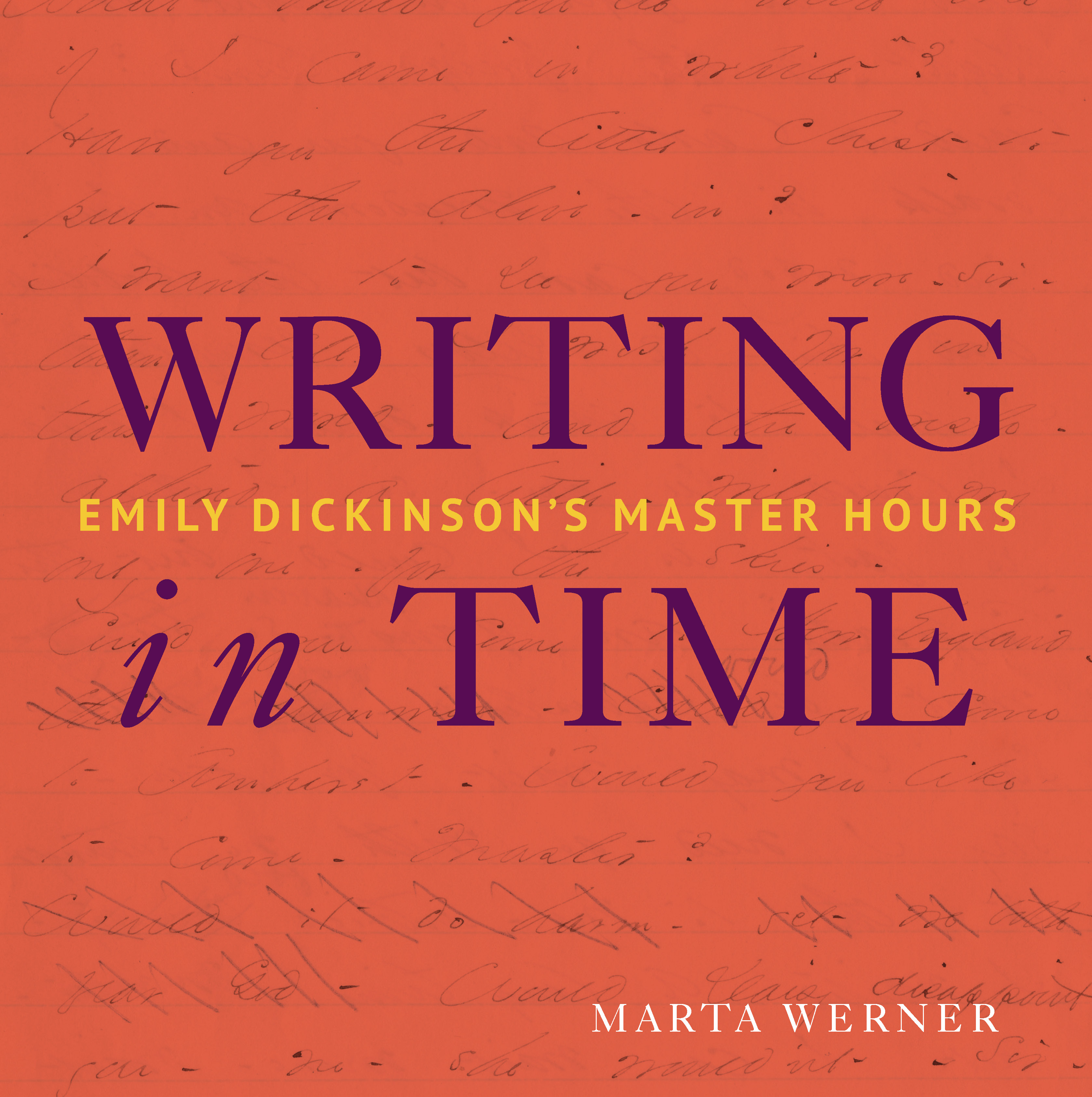The publication history of Dickinson’s poems is also a story of possession, which the scholar Marta Werner recounts in Writing in Time: Emily Dickinson’s Master Hours, a meticulous edition of the so-called Master letters, those three unsent letters Dickinson addressed to an unknown person or persons in language that is startling, passionate, playful, and erotic:
and you have felt the Horizon—/hav’nt you—and did the/sea—never come so close as/to make you dance?/I dont know what you can/do for it—thank you—Master—/but if I had the Beard on/my cheek—like you—and you—had Daisy’s/petals—and you cared so for/me—what would become of you?/Could you forget me in fight,/or flight—or the foreign land?
Committed to a pristine duplication (rather than interpretation) of the physical letters, Werner has produced a beautiful eleven-by-eleven-inch square book that decidedly conveys the deep pleasure she takes in the contemplation and handling of primary documents. As she acknowledges, she “reconceives the editorial enterprise as a critical meditation and devotional exercise.” There’s no doubting that. But for some reason she does not place the facsimiles of the three letters up front—to my mind a mistake, since we need to see them before we can care about their impact or the vexed way they have come to accrue meaning since they were first published sixty-five years ago.
Preceding the facsimiles, then, Werner offers historical and textual introductions that “seek to track and explore the evolution of the documents’ material, ramifying characteristics and connections as they follow no single trajectory and run towards no certain end.” In other words, because Dickinson chose not to publish the almost two thousand poems she wrote, their publication history affects the way we read them and her correspondence. When she died in 1886 at age fifty-five, her younger sister, Lavinia, discovered a huge cache of poems, some stitched together into booklets and fastened with thread, some simply fragments of verse. Determined to see the work in print, Lavinia went for help to her sister-in-law Susan Dickinson. Emily had sent Susan more than 250 poems over the years. “With the exception of Shakespeare,” Emily once wrote her, “you have told me of more knowledge than any one living.”
But Susan dawdled, so the impatient Lavinia contacted Emily’s friend Thomas Wentworth Higginson, the author and former abolitionist. Busy and a bit nonplussed, he said he couldn’t undertake the huge task by himself, so Lavinia then turned to Mabel Loomis Todd, the wife of an astronomer at Amherst College, to transcribe the poems. Todd also happened to be the longtime mistress of Austin Dickinson, Lavinia and Emily’s brother and Susan’s husband. A family storm was brewing.
